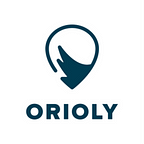All That Tour Operators Need to Run a Successful Live Tour
Live tours have been growing in popularity since the first lockdown one year ago. Now, they emerge as an alternative revenue stream with the potential to drive income even when the pandemic is over.
If you are thinking about venturing into this space, it’s a good starting point listing all the gear you need in order to run your own live tour.
However, before heading to the checklist, you should be aware that not all types of tours are suitable for live stream.
Outdoor experiences held in locations with poor or no internet access can’t be turned into a live tour for example. On the other hand, cooking classes, walking tours and attractions (e.g. museums and galleries) are perfect for this type of digital product.
Take a look now at the basic equipment you will need in order to create your own virtual live tour experience.
Fast internet connection
The most important technical aspect to run a successful live tour is the internet connection.
Without a fast and stable connection hardly anyone will be attending your tour until the end. And most likely they will ask for their money back.
Contact your mobile operator for the best internet plan they offer, don’t save money on that. After all, you don’t want your gigabytes to finish in the middle of a tour, do you?
An alternative is using mobile broadband. Those portable devices can offer you a stable internet connection without a data limit, depending on your plan.
In case your experience takes place indoors, just check if an internet speed of at least 5 mbps is available. That should be enough to handle the quality of your live tour.
A platform for live tours
There are different meeting platforms for you to broadcast your live tour. Zoom, Google Hangouts, GoToWebinar and Webex, just to name a few of them.
With different options in the market, make sure to choose the one that will offer the interactivity you are looking for at an affordable price.
Zoom is very popular with tour operators who are working with virtual tours. With it, you can share slides, create a live quiz, and easily interact with your guests.
You can sign up for free to try it out.
Support material
An engaging live tour goes beyond a stand-alone host talking to a camera. That means you should add extra elements that will make your experience more immersive.
That can be a slide presentation, a video, a Q&A section, or a food box delivered to your audience. It’s your job to think about all the aspects that will make your product a unique experience for your guests.
A good camera
You do want your audience to have a clear view of the sights, objects, people and whatever your camera is focusing on, don’t you?
For that purpose, you need a mobile with a good frontal camera. Especially if you don’t have a cameraman.
If you are offering a cooking class or another indoor experience, a notebook camera can get the job done. However, investing in a professional camera or a webcam with better image quality is something you should consider.
You can find good webcams in Amazon from only $20.
A gimbal or a tripod
Imagine that you are attending a virtual walking tour. The guide is showing a detail of an ancient monument, but when you try to focus on it you end up dizzy with the jerky movements of the camera. That definitely isn’t a good experience.
Enhance the quality of your live tours with a stable image. You can do that with a gimbal or a tripod. A gimbal is a pivoted support that permits rotation of the camera about an axis, according to Wikipedia.
The right support you need depends on the nature of your tour. If it requires you to move from one place to another holding the camera, you need a gimbal. If your live tour takes place in a fixed location, a tripod will attend to your needs.
Prices for a gimbal range from $30 to $350 in Amazon, and you can find good tripods from $20 in Amazon as well.
Microphone
In a live tour, a good audio quality complements a great image. You need a mic that is comfortable to use and captures clean audio when you are speaking.
I recommend you to try a lapel microphone. Its audio quality is great and it’s also easy to use. You can find lapel microphones starting from $4 on Amazon.
Earphones
As important as the microphone, you need earphones to hear the audience questions and feedbacks during the live tour.
Maybe it’s a good idea to use a wireless earphone or headset. Try to keep a clean setup to avoid accidents with cables.
Wireless earphones with good reviews can be found in Amazon for $36.
Experienced tour guide
The tour guide is the soul of your live tour. How much you can charge for your virtual product depends on their ability to hold the audience’s attention and to transmit the information.
The person you choose for this role should be comfortable in front of the camera, have a high level of engagement with the guests, and also be tech-savvy.
Having a good command of the camera is also important. Smooth movements and zooming at the right time will add extra value to your experience.
Conclusion
Creating a live tour is fairly simple. If you have a good internet connection and a highly skilled tour guide, the chances are high that you will be successful with your new product.
If you want to take a step forward into the virtual tours, check out how you can integrate VR into your tours and activities.
Do you think virtual tours are the future of the tourism industry or they are more like a marketing tool?
Originally published at https://www.orioly.com on April 14, 2021.
